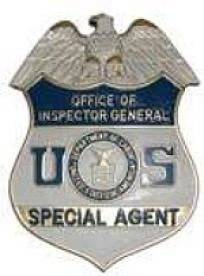Amid alleged failures of skilled nursing facilities to meet care and discharge planning requirements, OIG identifies substantial payment errors.
On February 27, the Office of Inspector General (OIG) for the U.S. Department of Health and Human Services (HHS) issued a report on skilled nursing facilities (SNFs). The report, "Skilled Nursing Facilities Often Fail to Meet Care Planning and Discharge Planning Requirements" (Report),[1] focuses on evaluating compliance with requirements pertaining to quality of care, care planning, and discharge planning. The Report attempts to fiscally quantify alleged deficiencies for 190 Part A SNF stays exceeding 21 days in 2009, and it estimates payment errors of $5.1 billion.
The context of the Report's conclusion is a very limited survey of SNF stays. In 2009, there were 1,104,692 SNF stays exceeding 21 days in the United States and 15,884 Medicare, Medicaid, or dually certified nursing facilities in operation.[2] For purposes of the Report, OIG reviewed a stratified simple random sample of 190 Part A SNF stays exceeding 21 days from calendar year 2009. The records reviewed included the care plans, post-discharge plans, Minimum Data Sets (MDSs), Resident Assessment Protocols (RAPs), progress notes, therapy records, and other documentation of services provided.
Whether these limited records justify the extrapolated conclusions, particularly the suggestion of payment errors of billions of dollars, is debatable. What is not debatable is the pronounced trend of regulatory compliance and enforcement scrutiny for skilled nursing home operations at the state and federal levels. Regulators and enforcers are once again focusing on quality of care, billing, and regulatory compliance in long-term care in direct and ancillary services. For this reason, the Report is an important reference for assessing compliance and risk-management activities.
Mandatory compliance provisions go into effect for nursing homes on March 23, 2013, under section 6102 of the Affordable Care Act (ACA). These requirements are in addition to the Quality Assurance and Performance Improvement Programs for which CMS recently released a core set of introductory tools.
Summary of OIG Findings
Care Planning and Provision of Services
Reviewers evaluated beneficiary records to determine whether care plans (1) addressed RAPs (or explained why RAPs were not addressed), (2) included measurable objectives and detailed time frames for specified services, and (3) were completed by an interdisciplinary team. The specified services included scheduling toileting plans or bladder retraining programs, parenteral IV or feeding tubes, skin treatment, speech therapy, occupational therapy, physical therapy, respiratory therapy, and restorative nursing services. The reviewers also evaluated whether the relevant services were, in fact, provided as called for in the care plans, controlling for instances where the care plan was modified or the beneficiary refused treatment or was ill.
OIG found that for 37% of sampled stays, SNFs did not meet care plan or service requirements, and for 26% of sampled stays, care plans (1) failed to address one or more problems in the beneficiary's assessment, (2) did not include measurable objectives or detailed time frames, or (3) were not completed by an interdisciplinary care team. The reviewers more generally observed that care plans were often generic and did not appear to be tailored to the patient's individualized needs. OIG further found that in 15% of sampled stays, SNFs did not provide services in accordance with the care plans, either providing too much or not enough care. Notwithstanding evidence of both excess and too little care being provided, OIG noted that SNFs have an incentive to provide more therapy than called for in care plans because the rate of reimbursement varies directly with the amount of therapy provided.
Discharge Planning
Reviewers identified every stay that should have required discharge planning (83 of the 190 sampled stays) but did not indicate any discharge planning. The data was then extrapolated to estimate the percentage of SNFs that fail to meet discharge planning requirements.
The Report found that for 31% of sampled stays, SNFs failed to either have (1) adequate summaries of the beneficiaries' stays or statuses at discharge or (2) any post-discharge plans of care.
Quality of Care
To evaluate quality of care, OIG asked reviewers to identify what they believed to be egregious examples of poor quality of care. Egregious examples were found with respect to wound care, medication management, and therapy.
Regarding wound care, reviewers found that SNFs failed to adequately track and treat wounds or provide appropriate interventions to prevent worsening of existing or acquired wounds.
With respect to medication management, reviewers found that SNFs prescribed drugs inappropriately or failed to follow up when patients did not respond positively to prescribed drug regimens. Reviewers also identified frequent off-label use and use of drugs with black box warnings. As for therapy, reviewers noted that beneficiaries were often receiving inappropriately high levels of therapy. One example the Report provided was of a beneficiary with a dislocated hip who should not have been ambulating but was nonetheless provided at least 720 minutes of therapy a week (i.e., ultra-high therapy RUG classification).
OIG Recommendations and CMS Response
Based on its findings covering 2009 data, OIG concluded that it paid $5.1 billion for stays in which SNFs did not meet care requirements, service requirements, or discharge planning requirements. According to OIG, these deficiencies "raise concerns about what Medicare is paying for" and are evidence that "CMS should do more to strengthen its oversight of SNFs to ensure that they perform appropriate care planning and discharge planning for [Medicare] beneficiaries." OIG's specific recommendations to CMS include the following:
- Strengthening regulations related to care and discharge planning
- Providing guidance to SNFs to improve care and discharge planning
- Increasing surveyor efforts to identify SNFs that do not meet care and discharge planning requirements in order to hold SNFs accountable when they fall short
- Linking payments to meeting quality-of-care requirements
- Following up on the SNFs that failed to meet quality-of-care requirements to perform more comprehensive surveys
CMS generally concurred with all of OIG's recommendations. CMS advised that it was reviewing participation requirements, 42 C.F.R. pt. 483, for long-term care facilities to identify ways those requirements might be strengthened to better promote quality of care through timeliness, resident-centeredness, and quality improvement. CMS also advised that it is using quality improvement organizations to improve quality of care and that it has convened a work group to identify areas in its State Operations Manual[3] where they may better address discharge planning requirements. It agreed that increased survey efforts would be beneficial and said it would consider ways to strengthen oversight and enforcement efforts.
With respect to linking payment to quality-of-care determinations, CMS said that it would consider incorporating care planning and discharge planning in future nursing home demonstrations. Finally, CMS advised that it would conduct follow-up surveys and a closer review of those sampled facilities that demonstrated subpar quality of care.
Mandatory Ethics and Compliance Programs
In addition to increased CMS and OIG oversight, SNF providers face new requirements for internal compliance and ethics programs. Section 6102 of the ACA requires SNFs to implement a compliance and ethics program for all employees and agents by March 23, 2013. Although CMS has missed its deadline for promulgating rules implementing the new SNF compliance program provision, nursing home providers should assess the design of compliance programs to comply with the statutory requirements.
Section 6102 requires compliance programs to be "effective in preventing and detecting criminal, civil, and administrative violations . . . and in promoting quality of care consistent with regulations" developed by CMS. Organizations that operate five or more facilities are subject to special requirements. The required "core elements" of any SNF compliance program are as follows:
- The organization must have established compliance standards and procedures to be followed by its employees and other agents who are reasonably capable of reducing the prospect of criminal, civil, and administrative violations.
- Specific individuals within high-level personnel of the organization must have been assigned overall responsibility to oversee compliance with such standards and procedures and have sufficient resources and authority to assure such compliance.
- The organization must have used due care not to delegate substantial discretionary authority to individuals whom the organization knew, or should have known through the exercise of due diligence, had a propensity to engage in criminal, civil, and administrative violations.
- The organization must have taken steps to communicate effectively its standards and procedures to all employees and other agents, such as by requiring participation in training programs or by disseminating publications that explain, in a practical manner, what is required.
- The organization must have taken reasonable steps to achieve compliance with its standards, such as by utilizing reasonably designed monitoring and auditing systems whereby employees and other agents could detect criminal, civil, and administrative violations and by having in place and publicizing a reporting system whereby employees and other agents could report violations by others within the organization without fear of retribution.
- The standards must have been consistently enforced through appropriate disciplinary mechanisms, including discipline of individuals responsible for the failure to detect an offense.
- After an offense has been detected, the organization must have taken all reasonable steps to respond appropriately to the offense and to prevent further similar offenses, including any necessary modification to its program to prevent and detect criminal, civil, and administrative violations.
- The organization must periodically undertake reassessment of its compliance program to identify changes necessary to reflect changes within the organization and its facilities.[4]
For additional guidance, pending issuance of regulations from CMS, providers may look to HHS-OIG compliance guidance for nursing facilities from 2000[5] and 2008.[6]
[1]. View the full Report here.
[2]. Data regarding nursing homes in operation from 2009 was obtained from the Centers for Medicare and Medicaid Services (CMS) "Nursing Home Data Compendium," 2010 Edition, which is available here.
[3]. View the CMS State Operations Manual here.
[4]. 42 U.S.C. § 1320a–7j.
[5]. View the 2000 OIG Compliance Program Guidance for Nursing Facilities here.
[6]. View the 2008 OIG Supplemental Compliance Program Guidance for Nursing Facilities here.




 i
i


